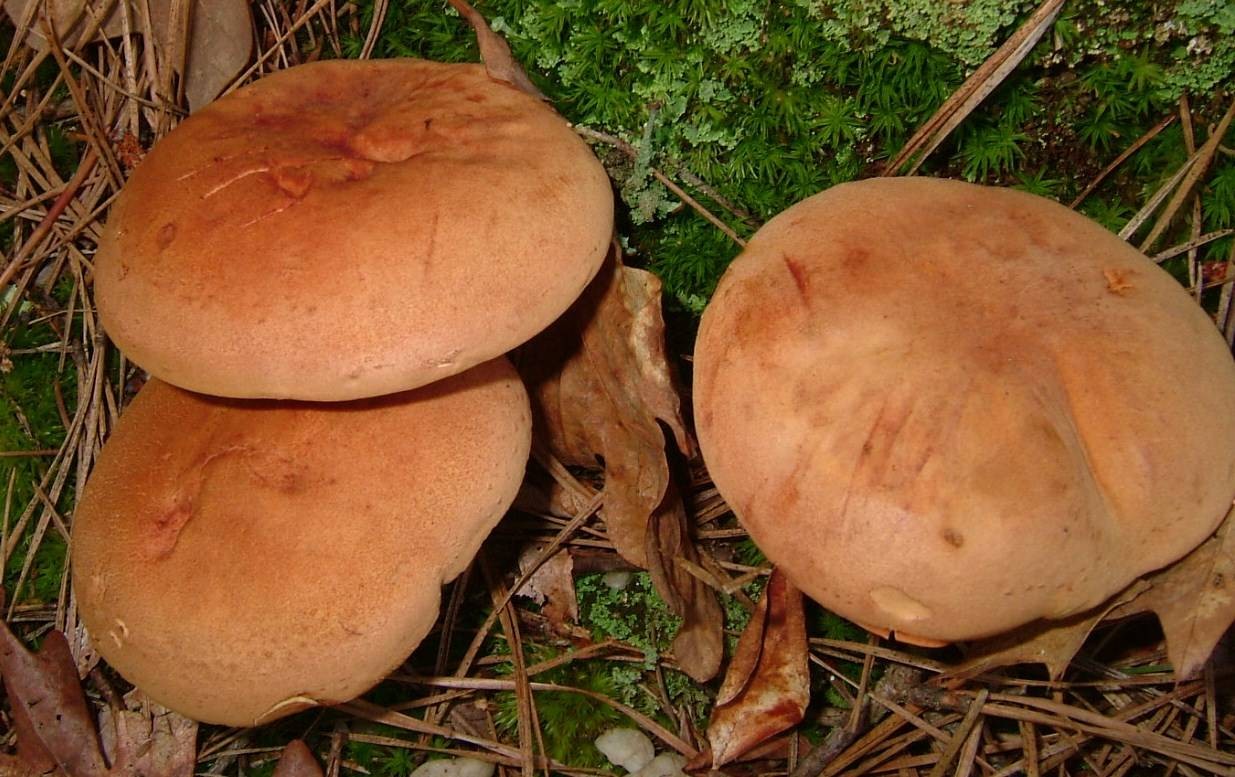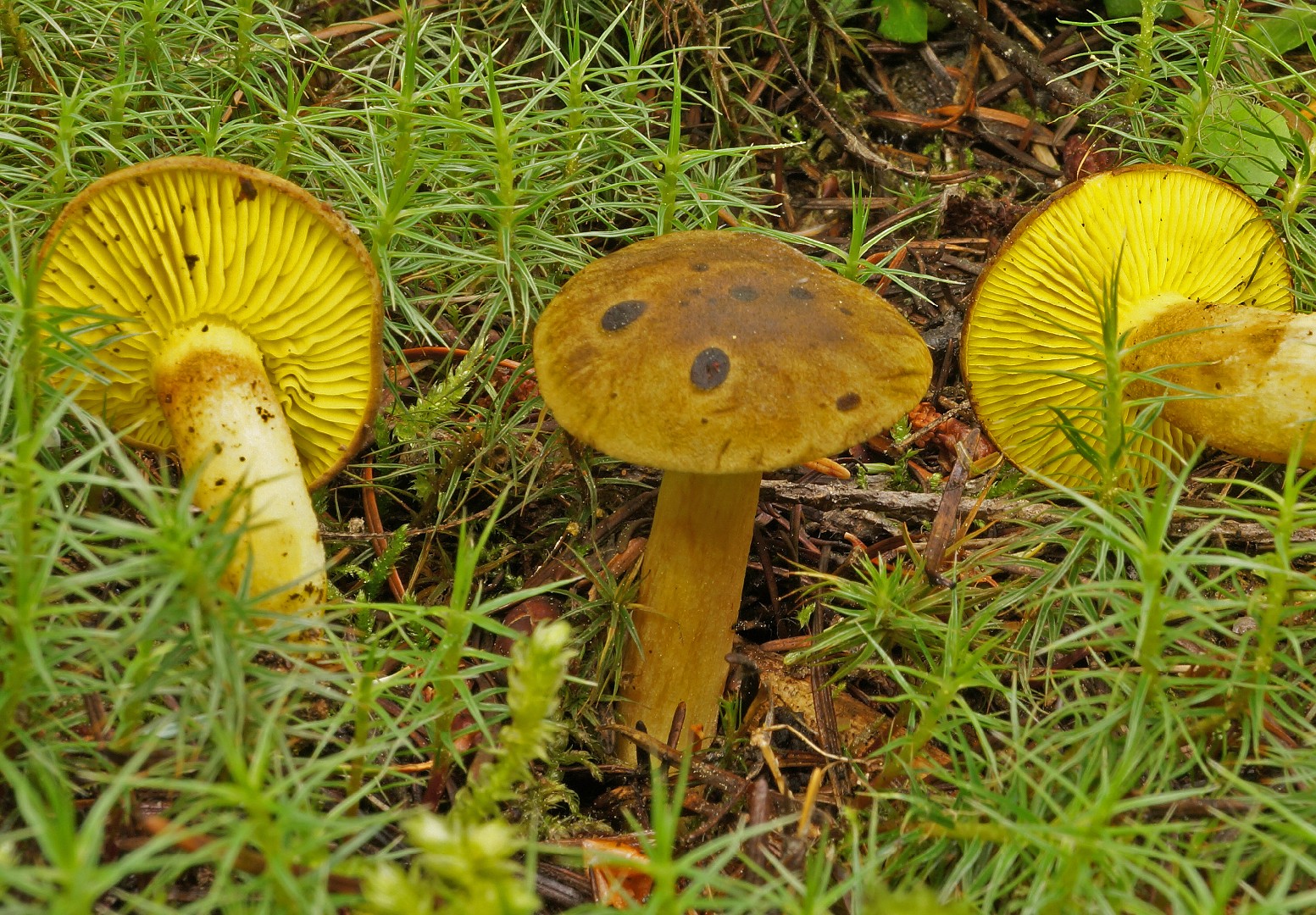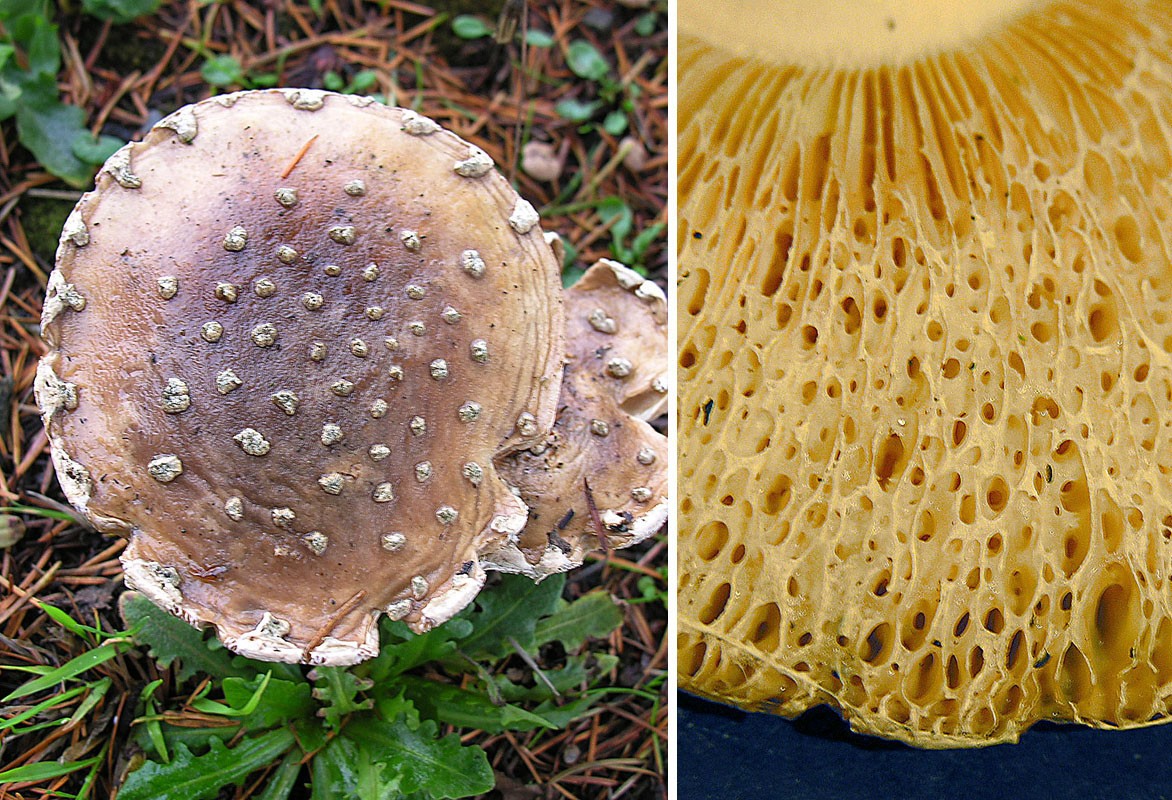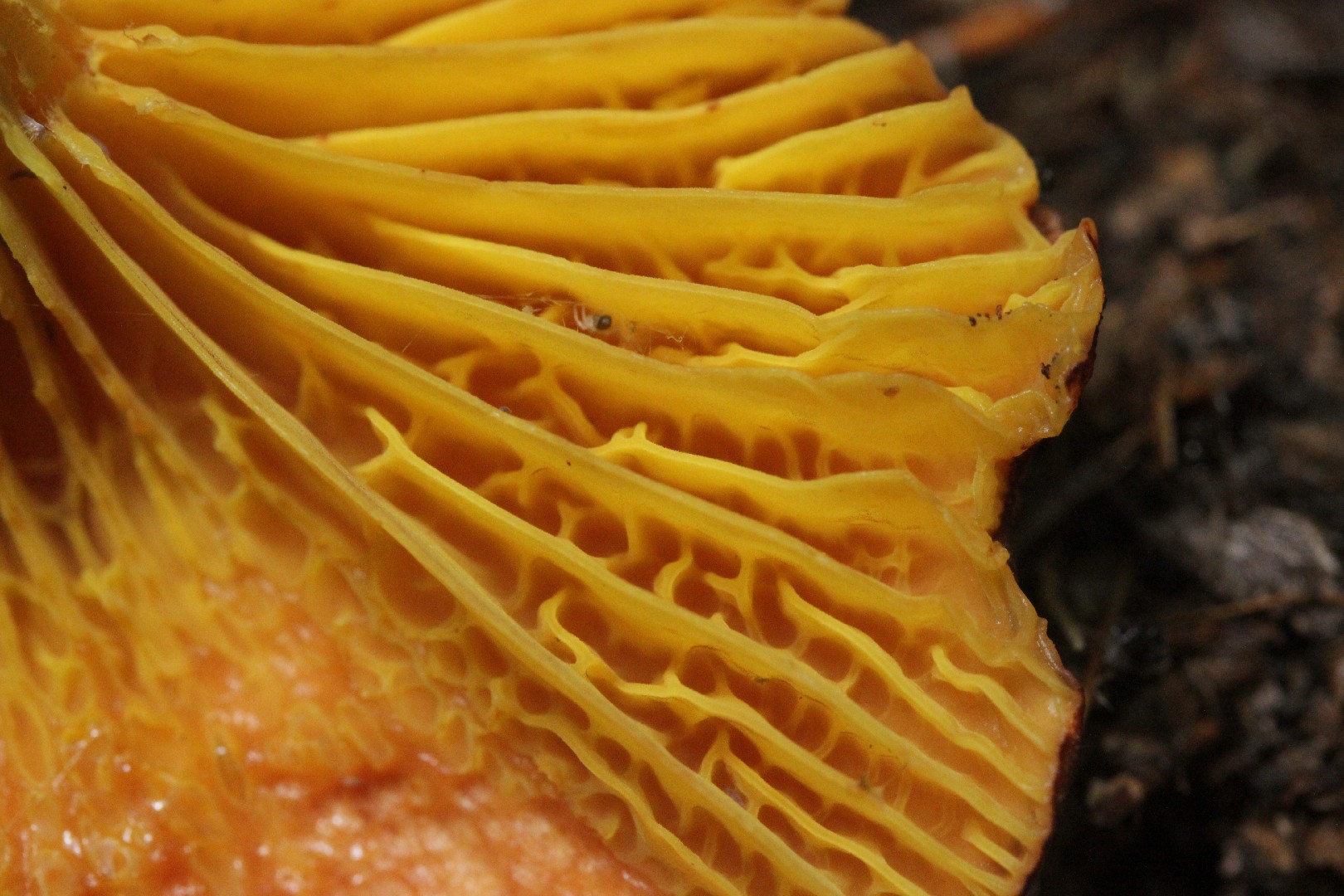Phylloporus
Nombre científico: Phylloporus
Phylloporus
Nombre científico: Phylloporus
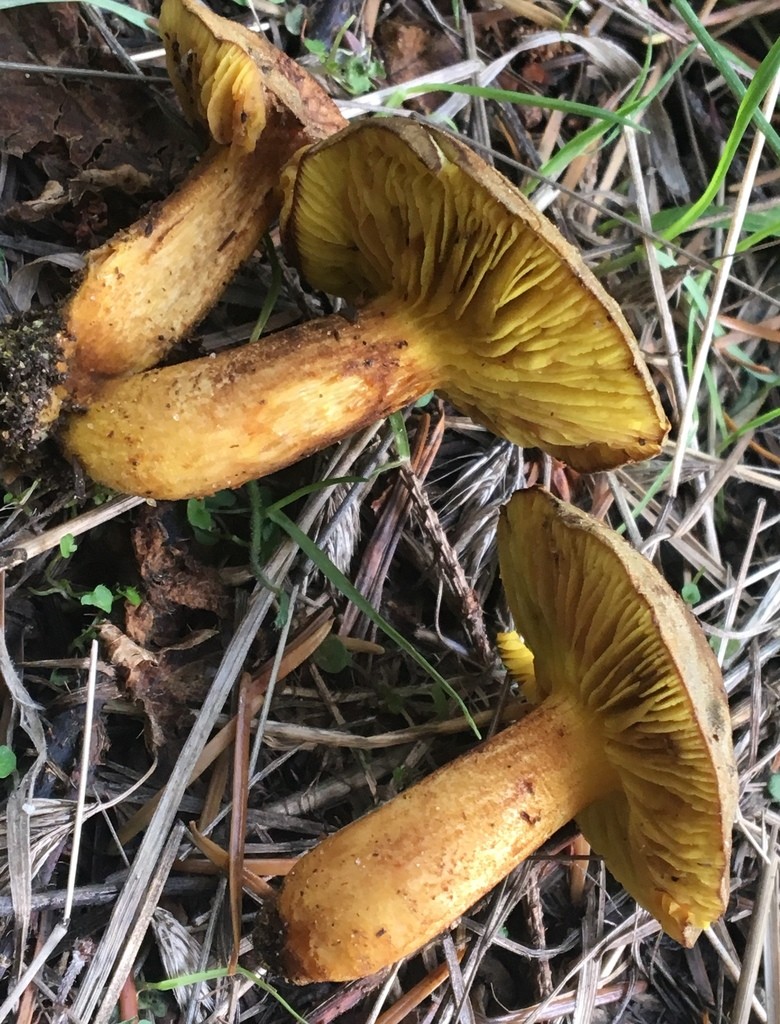 Photo By Liam O'Brien , used under CC-BY-4.0 /Cropped and compressed from original
Photo By Liam O'Brien , used under CC-BY-4.0 /Cropped and compressed from original Descripción
Phylloporus son un grupo interesante de hongos destacables por su característica física única: poseen branquias que parecen más poros bajo el sombrero, que pueden variar en color desde amarillo hasta verdoso. Estos hongos a menudo crecen en bosques y se encuentran comúnmente en asociaciones simbióticas con árboles, ayudando en el intercambio de nutrientes. Algunas especies dentro de este grupo muestran una coloración azulada cuando se magullan o cortan, creando un detalle visual llamativo.
